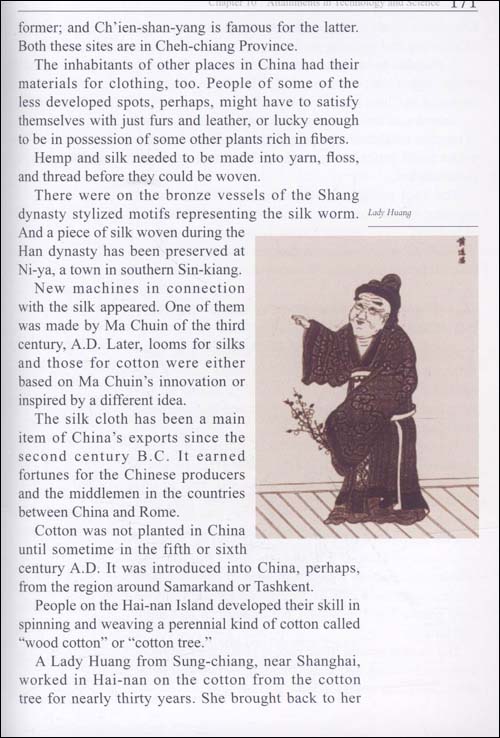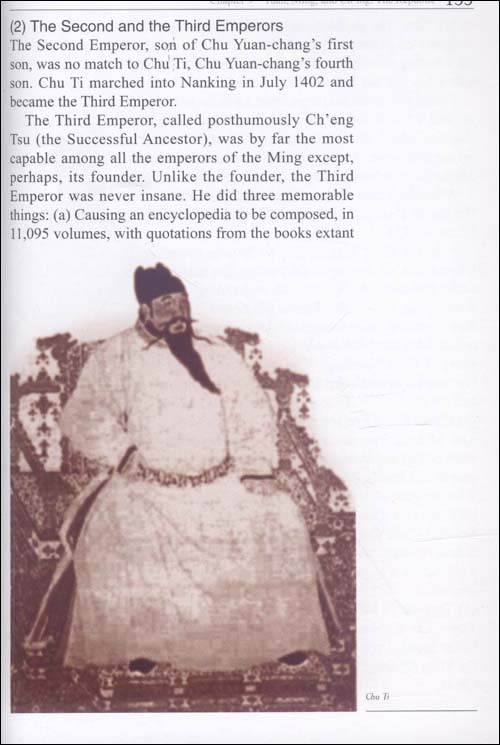Sample Pages Preview


O-mei Shan (the Eyebrow Mountain), in Sze-chuen Province, has a Gold Roof Temple on its top, which is more than 3,000 meters above sealevel. Wu-tai Shan (the Five Layers Mountain), in Shan- si Province, was where two very famous bodhisattvas, Wen-chu and P'u-hsian, had held a discussion session. Huang Shan (the Yellow Mountain), in An-hwei Province, has a pretty Sea of Clouds around its waist. Among China's fifteen hundred rivers, the longest is the Long River. This Long River is known to the West as "Yang-tze River". Yang-tze is, in fact, the name of a small island inside this river between Shanghai and Nanking. The Long River is about 6,300 kilometers long. It originates in Ch'ing-hai and runs through six other povinces before it empties itself in the sea near Shanghai. Next in length to the Long River is the Yellow River which, like the Long River, also originates in Chinghai province. This Yellow River makes a loop in Suiyuan, absorbs the Fen in Shan-si and the Wi in Shensi, turns eastward to flow in northern Ho-nan, and loses its momentum on the flat land there, leaving behind a great deal of sands and silt. The sands and silt piled up and kept on raising the Yellow River's bed. People built dikes on both of its banks to protect their fields and houses, but the water often went over those dikes and flooded the fields and the houses. The Yellow River earned by doing such things a very bad nick-name: "China's Sorrow". It has been, on the other hand, also China's blessing. The challenge it offered had trained the Chinese into a hard working and thrifty people. The sands and silt it deposited have made the alluvial Flood Plain very fertile.

